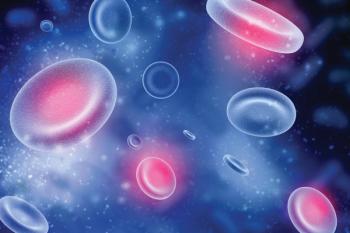
Cryoablation Regimen Receives FDA Marketing Authorization for Breast Cancer
Cryoablation, when combined with adjuvant endocrine therapy, may offer a minimally invasive outpatient strategy in older patients with breast cancer.
The FDA has granted marketing authorization to ProSense, a minimally invasive cryoablation treatment, in combination with adjuvant endocrine therapy for the treatment of women with low-risk breast cancer who are 70 years or older, according to a news release from the developer, IceCure Medical.1
Support for the regulatory decision was based on an “abundance of data,” including those from IceCure’s
A total of 7 ipsilateral recurrences were reported in the study as well as 2 instances of distant metastases and 4 cases of second primary breast cancer; the 5-year disease-free survival (DFS) rate was 92.8% (95% CI, 87.6%-95.8%). A breast cancer survival rate of 96.7% (95% CI, 92.2%-98.6%) was observed with the cryoablation strategy, with 2 and 3 patients dying due to distant metastases and unknown reasons, respectively. The overall survival rate was 88.6% (95% CI, 82.9%-92.5%).
“The ICE3 study has proven that cryoablation with ProSense is a safe, minimally invasive ablative procedure with results similar to that of lumpectomy patients who took endocrine therapy and has the benefit of being an office-based, nonsurgical treatment,” ICE3 study lead author Richard Fine, MD, FACS, breast oncology surgeon of the West Cancer Center & Research Institute and past president of the American Society of Breast Surgeons, stated in the news release on the FDA decision.1 “Further data coming out of the postmarket study should continue to support that cryoablation with ProSense is a successful option in the de-escalation of breast cancer care in appropriately selected patients.”
The institutional review board (IRB)–approved ICE3 trial enrolled and treated 194 women who were 60 years or older with unifocal, ultrasound-visible invasive ductal carcinoma 1.5 cm or smaller in size and with a low-risk cancer profile. Cryoablation was performed with the ProSense Cryosurgical System, which utilized liquid nitrogen to freeze target lesions.
Patients were treated with a double-freezing method, with freezing cycle durations determined based on the ice ball width measured under real-time ultrasound. Treatment times were defaulted to a minimum 9-minute freeze, 8-minute passive thaw, and another 9-minute freeze, according to protocol. Treatment times were tailored to reach at least 35-mm ice ball width for the initial freeze and 40 mm at the end of the second freeze without exceeding 12 minutes.
The median age in the study was 74.5 years (range, 55-94), and most patients were White (82.5%). All patients had estrogen receptor (ER)–positive or HER2-negative receptor status, 92.8% had progesterone receptor (PR)–positive receptor status, and 51% had a Nottingham tumor score of intermediate. The mean tumor size by ultrasound was 8.1 mm (range, 2.5-14.9) for the sagittal dimension, 7.4 mm (range, 2.8-14) for the transverse dimension, and 6.3 mm (range, 1-14) for the anterior-posterior dimension.
All tumors evaluated were grade 1 or 2 in severity, ER positive, and HER2 negative. A total of 92.8% displayed PR positivity. The mean dimensions of the ice ball among those who did not experience an IBTR during follow-up was 4.7 cm in length and 3.7 cm in width.
The primary study end point was the 5-year IBTR rate. Secondary end points included DFS, quality of life, breast cancer survival, OS, and safety.3
A total of 97 patients reported 187 device-related nonserious adverse effects (AEs). Most AEs reported were mild in severity, with 88.2% being Common Terminology Criteria for Adverse Events (CTCAE) grade 1. Moderate (CTCAE grade 2) and severe AEs (CTCAE grade 3) occurred in 9.6% and 2.1% of patients, respectively. The most common mild AEs included bruising (25.7%), pain in needle insertion (20.9%), and localized edema (19.3%).
“We are excited to add a minimally invasive choice around breast cancer treatments and to offer patients an effective, outpatient procedure,” stated Eyal Shamir, CEO of IceCure, in the news release.1 “With the ProSense Cryoablation System, we are giving women with low-risk, early-stage breast cancer the choice to freeze their cancer, not their lives, through an effective treatment that minimizes recovery time and [makes] minimal cosmetic changes to the breast.”
References
- IceCure Medical's ProSense cryoablation granted FDA marketing authorization for treatment of low-risk breast cancer in women aged 70 and above: significant development in giving women with breast cancer minimally invasive care. News release. IceCure Medical. October 3, 2025. Accessed October 7, 2025. https://tinyurl.com/bddfae5j
- Fine RE, Gilmore RC, Tomkovich KR, et al. Cryoablation without excision for early-stage breast cancer: ICE3 trial 5-year follow-up on ipsilateral breast tumor recurrence. Ann Surg Oncol. 2024;31:7273-7283. doi:10.1245/s10434-024-16181-0
- Cryoablation of low risk small breast cancer- ICE3 trial. ClinicalTrials.gov. Updated April 30, 2025. Accessed October 7, 2025. https://tinyurl.com/4na8254s
Newsletter
Stay up to date on recent advances in the multidisciplinary approach to cancer.



















































































